by Walt Anderson
I’m in a fowl mood today, so I want to feature one of my favorite waterfowl species, the Northern Shoveler. Many a casual observer has mistaken this bird for an odd Mallard with an exaggerated beak, so I want to give the shoveler a little love here, top billing if you prefer.
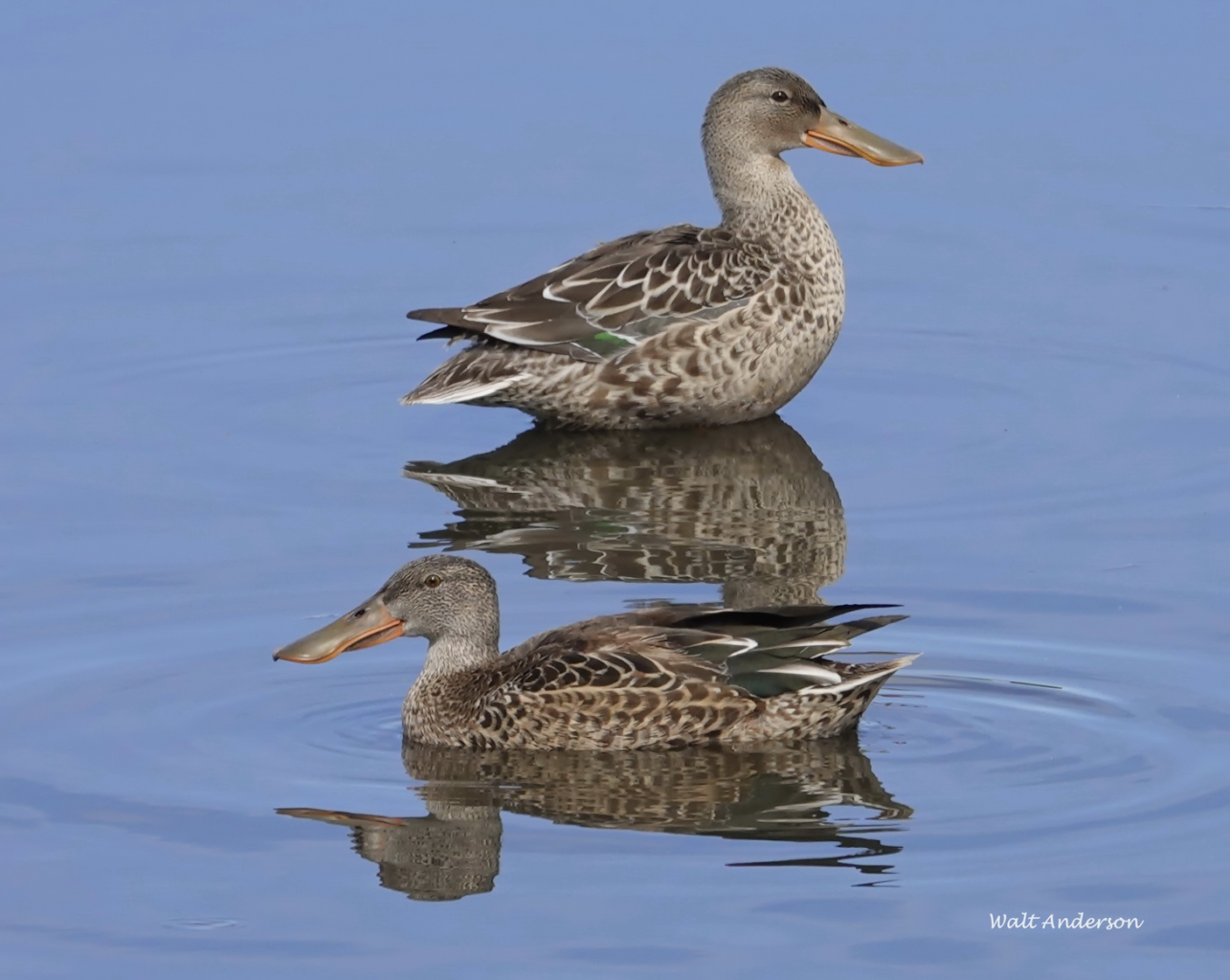
Since most ducks are strongly dimorphic, males colorful and females drab or cryptic, more attention is paid to the flamboyant drakes. However, I want to flaunt convention here and introduce the lovely hen first. A bit smaller than a hen Mallard, the female Northern Shoveler is patterned with subtle gradations of brown, buff, and white, with an iridescent green speculum in the wing and a modestly orange bill. As a photographer and artist, I was thrilled with this composition—simple, clean, and elegant.
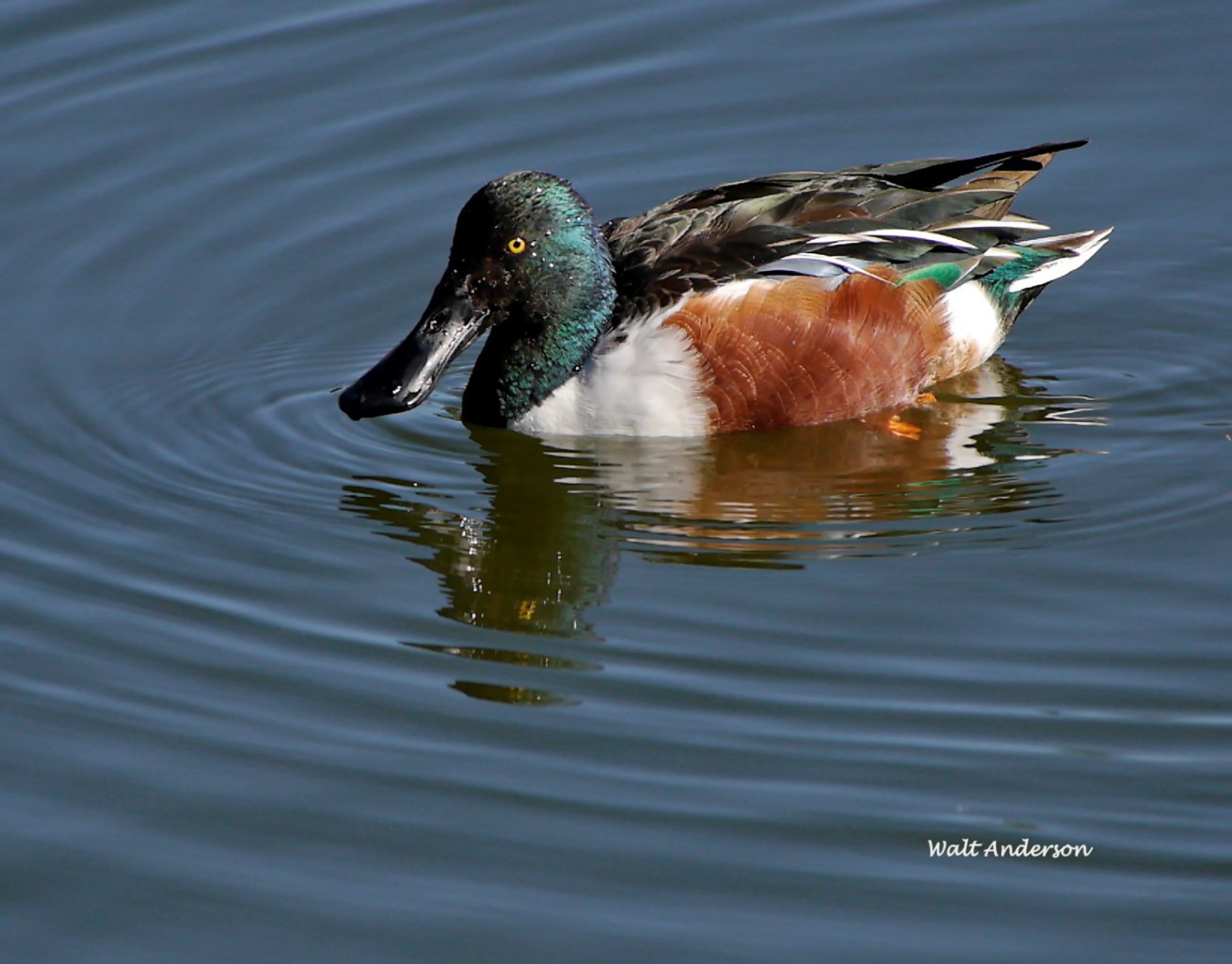
Oh, the male is pretty too. He shares many of the same colors as a drake Mallard, notably the green head and orange feet, but there are striking differences. His bill is black (not yellow), his chest is white (not rufous), his flanks are rufous (not white), his speculum is green (not blue), and his eye is bright yellow. And, of course, his bill is exceptional!
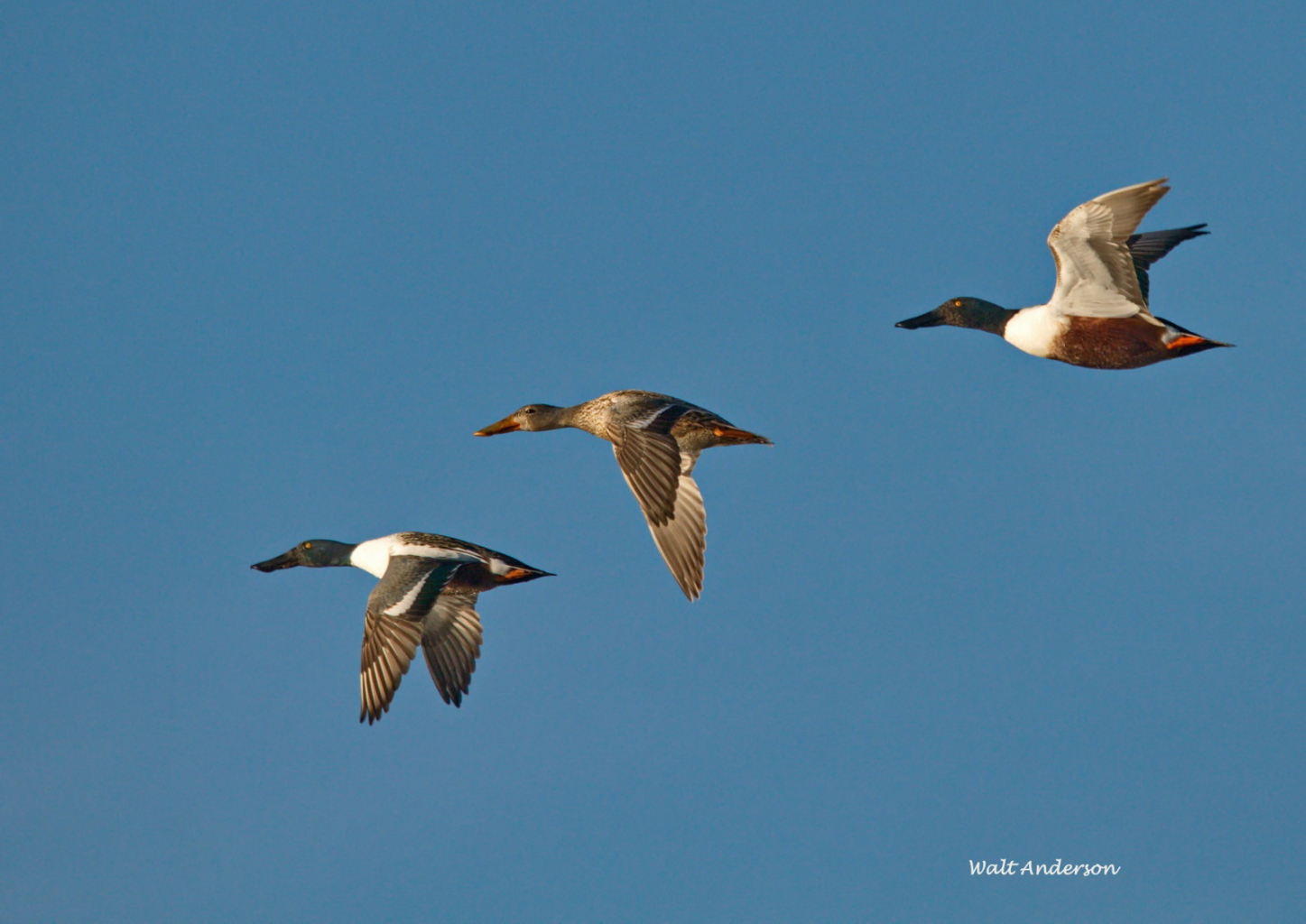
Shovelers are strongly migratory. We see them in the non-breeding period in Arizona, as most of them nest north of us, especially in the prairie provinces of Canada. They are far more abundant in the West than in the East, with the largest wintering populations in the Central Valley and San Francisco Bay of California and the coastal marshes of Louisiana.
Shovelers are considered a “dabbling duck” in the same subfamily as Mallards, Gadwalls, American Wigeons, and the like (genus Anas), but some authorities place them and several others in the genus Spatula, the “blue-winged ducks.” That puts them in the company of the Red Shoveler of Australia, the Cape Shoveler of South Africa, the Australasian Shoveler of Australia and New Zealand, the Garganey of the Old World, and the Cinnamon and Blue-winged Teals of North America.
The Northern Shoveler has by far the greatest distribution, being found in much of North America and across most of Europe and northern Asia. I have seen some of these Palearctic birds wintering in Ngorongoro Crater in Tanzania!

Iridescence comes from the structure of the feathers; it is not from a green pigment (the turacos of Africa are the only birds that produce a pure green pigment). That means that it can shift color depending on the light, so sometimes the head can appear blackish instead of green. Note the blue shoulder feathers here that are similar to those of male Blue-winged and Cinnamon Teals and unlike those of Mallards.
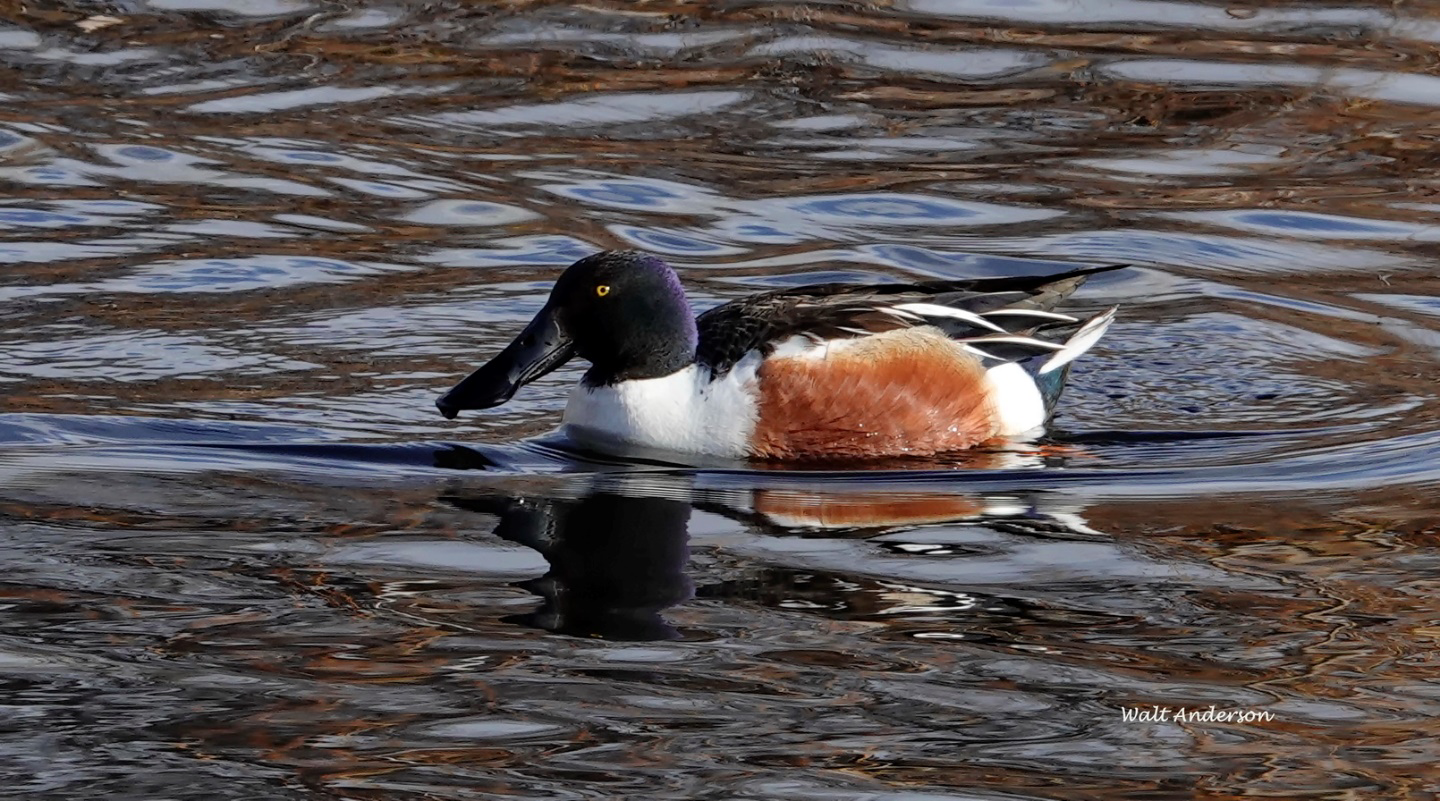
In some light, the head can appear purplish, a phenomenon we also see with Mallards and scaups.

Like other dabbling ducks, shovelers have two annual molts, one post-breeding in which the bright feathers are “eclipsed” by drab ones. Thus on the wintering grounds, you see some male ducks that have not yet gained their brilliant breeding plumage and look pretty scruffy (well, scruffy but not pretty).
Let’s give some attention to that massive bill. It’s clearly spatulate or spoon-shaped. In fact, some hunters refer to these birds as Spoonies or Spoonbills. Since a totally unrelated large wading bird is called a spoonbill, let’s call a spade a spade and stick to shoveler, shall we?
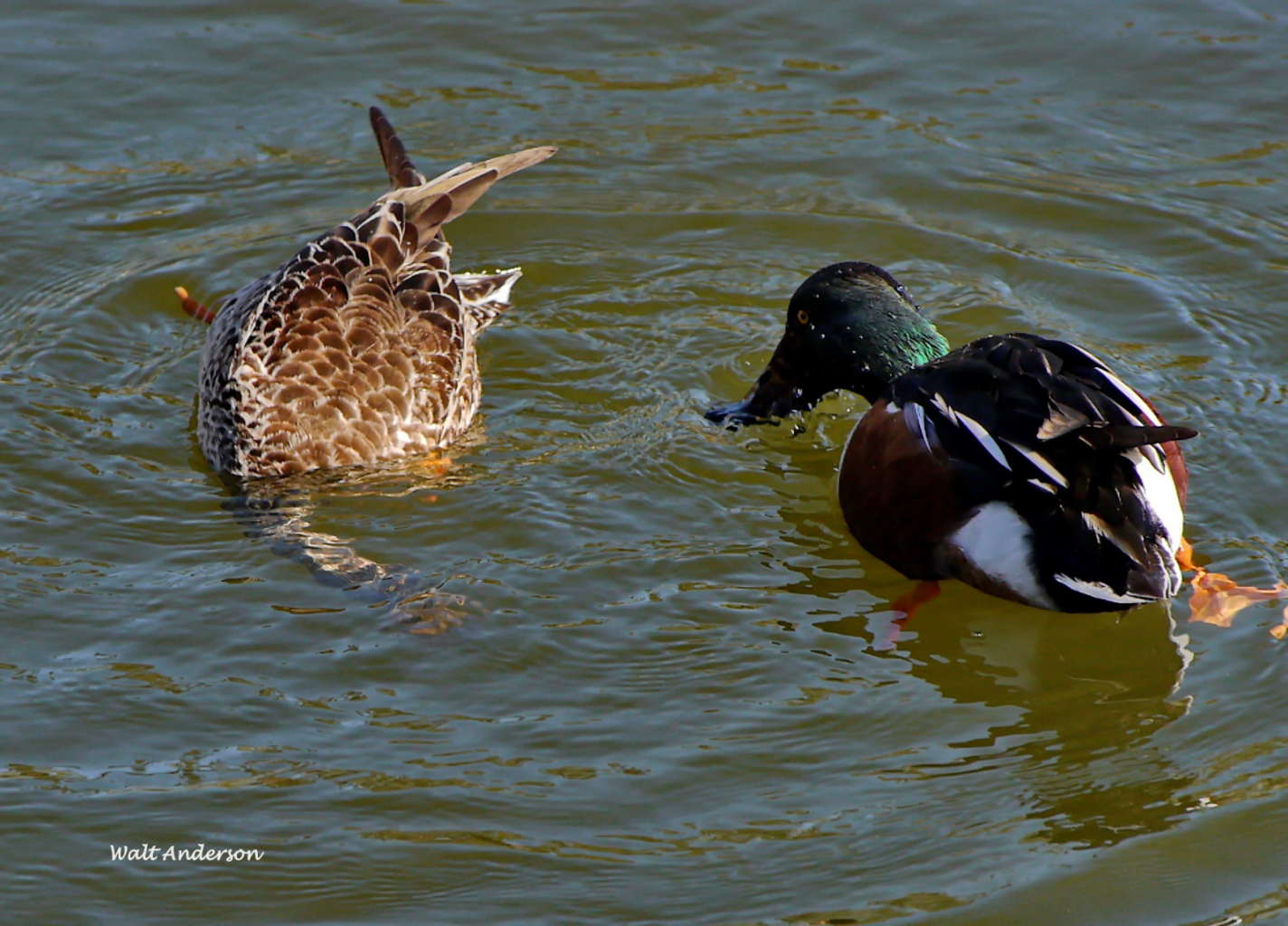
This feeding pair shows how that broad bill is perfect for sifting plankton, primarily tiny aquatic invertebrates like copepods, crustaceans (especially Daphnia), and insect larvae, but also some plant material, from the water. Circling creates a whirlpool effect that pulls the plankton to the surface for easy capture. Water is taken in with the tip of the bill, and the plankton are strained out by sieve-like lamellae before the water is jetted out at the base of the bill. This adaptation is convergent with the planktonic-feeding structures of flamingo bills.
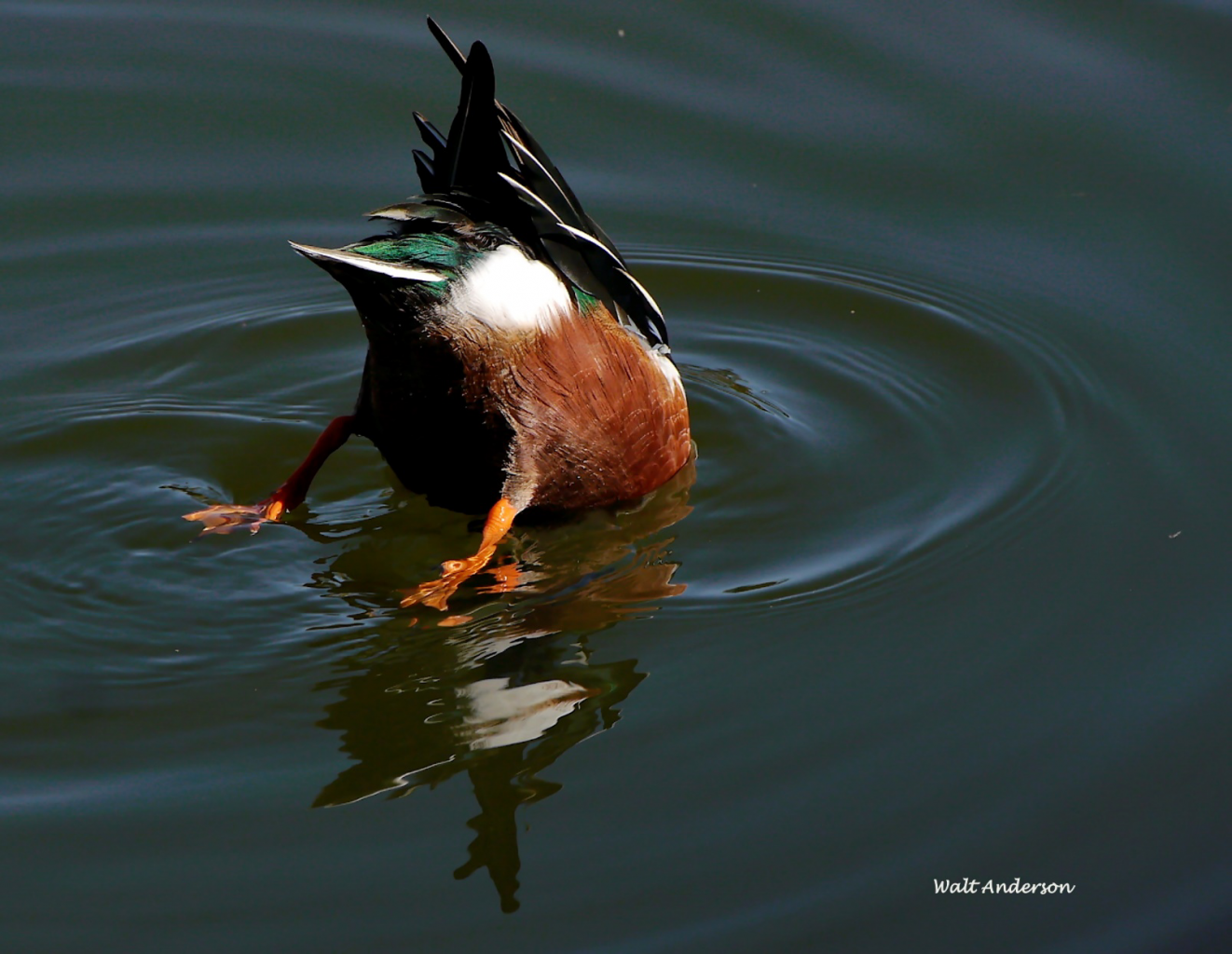
Occasionally a shoveler will tip up to feed like a Mallard typically does.
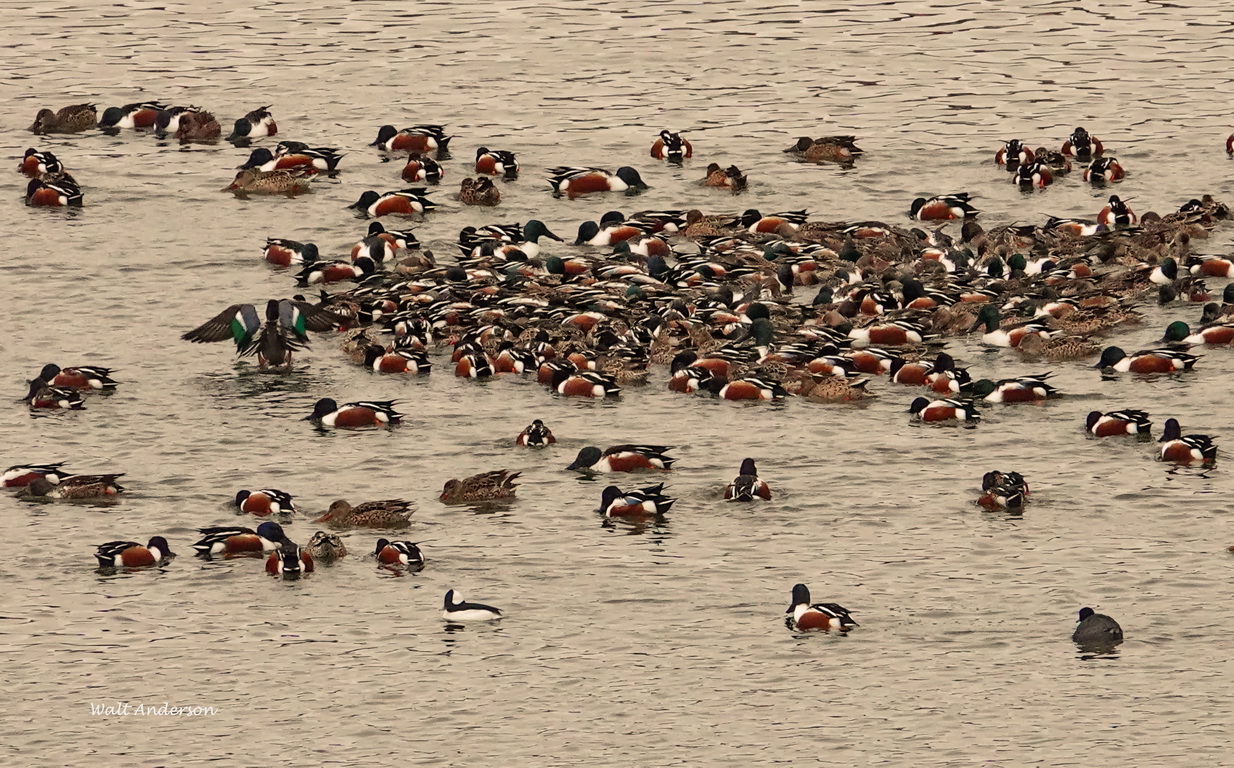
Creating the whirlpool effect works with large groups of shovelers too, so you can see rafts or cells of the birds, sometimes with other species at the fringes to capture some of the food items brought up by the circling congregation.
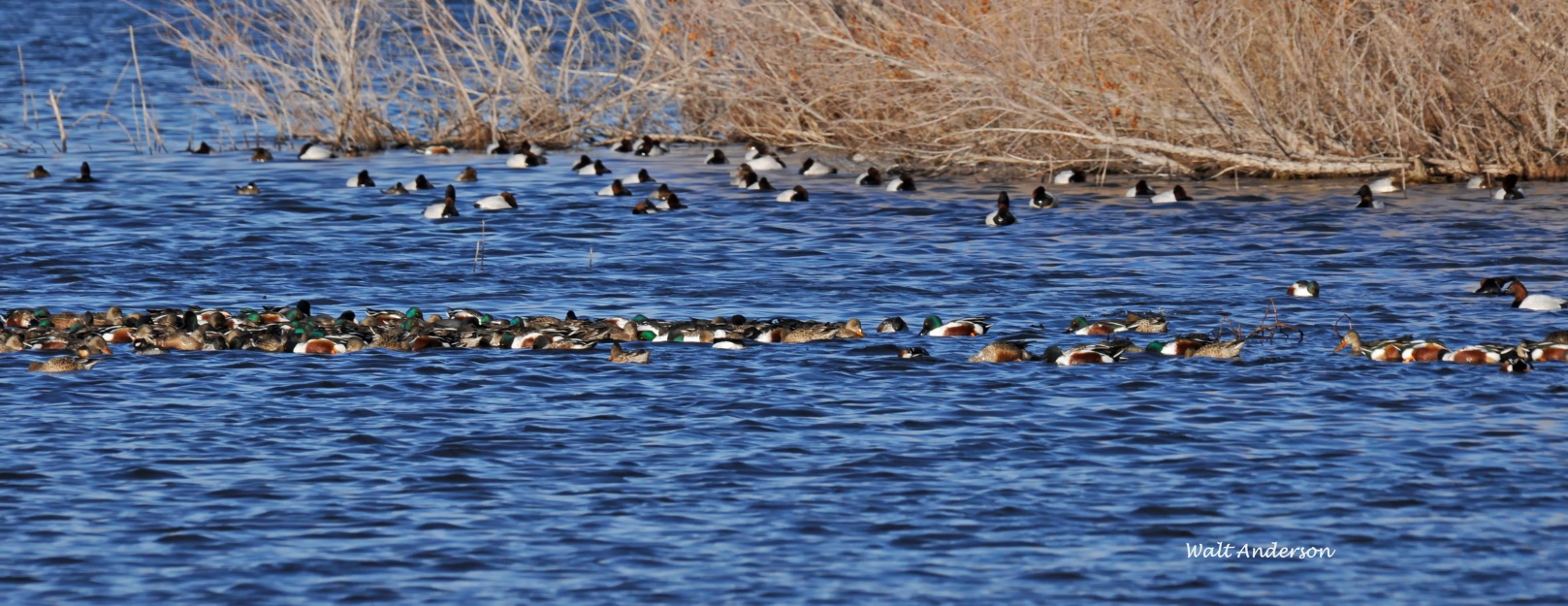
Such churning masses are extremely difficult to count accurately!
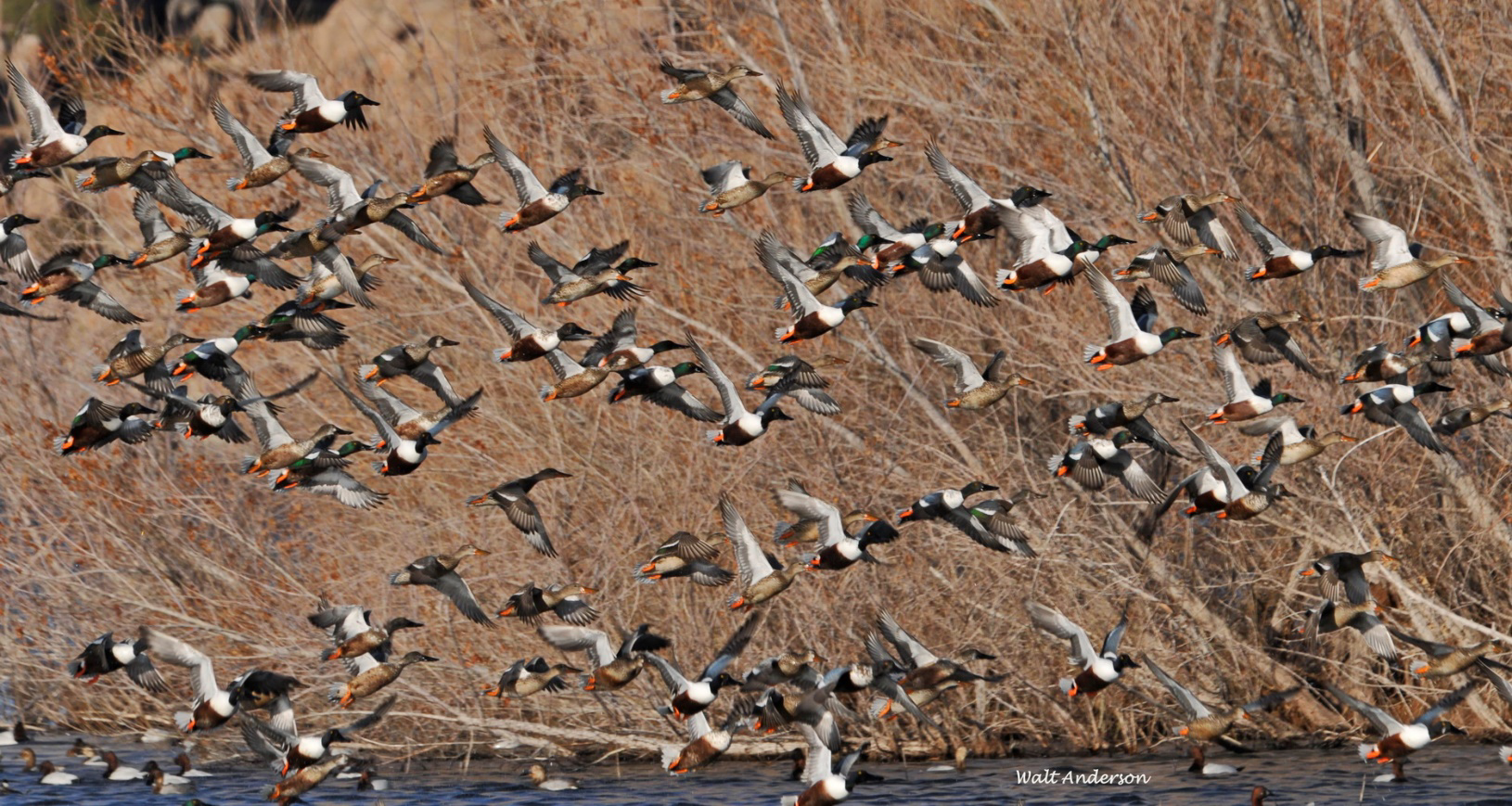
While shovelers are among the most common of North American ducks, they are not hunted much, as their flesh is considered a bit muddy and distasteful. Frank Bellrose, who wrote Ducks, Geese, and Swans of North America many years ago, mentioned that because of their general appearance and poor flavor, some hunters called them “neighbor’s mallards.” They would “pass them off to their neighbors as mallards—a good way to lose a neighbor!”
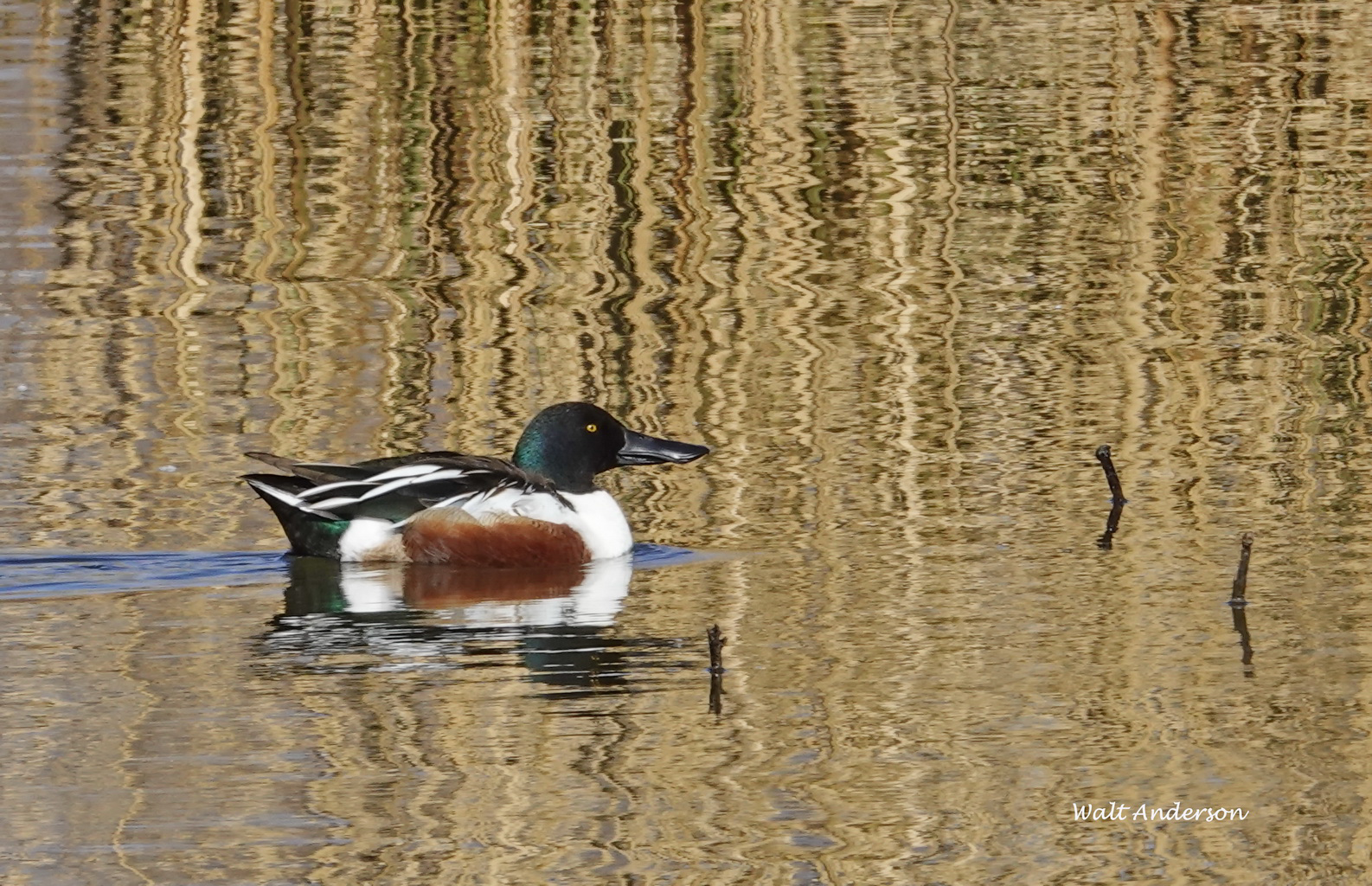
But I like to view them as beautiful, feathered neighbors, a valuable element of natural diversity to appreciate for their special uniqueness. Completely dependent on wetlands, they find fewer natural marshes in the Southwest than they used to, but they have adapted to reservoirs, city parks, and even sewage-treatment ponds. I love to hear the soft “took-took” calls of the males, . . .
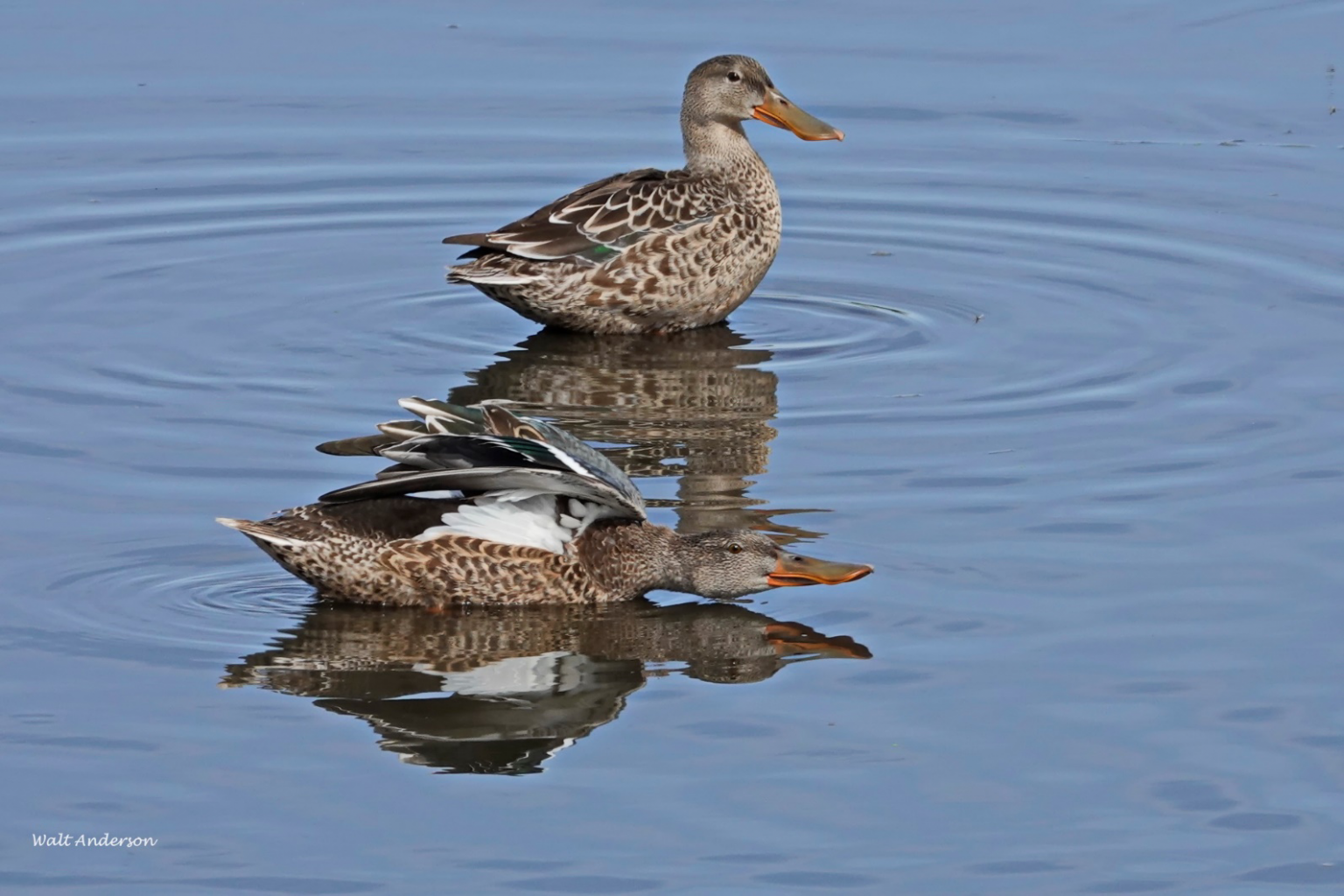
and I greatly admire the subtle beauty of the females. When you think about a bird uniquely adapted to a special niche, the shoveler truly fits the bill.
